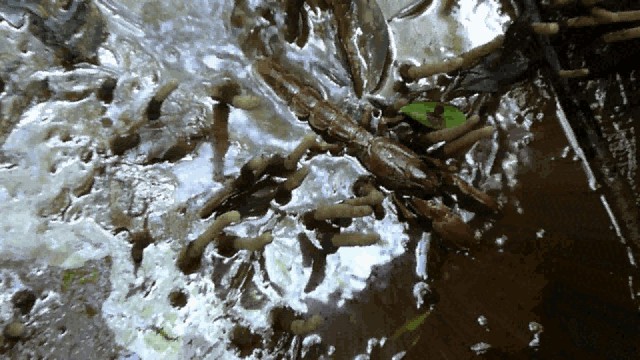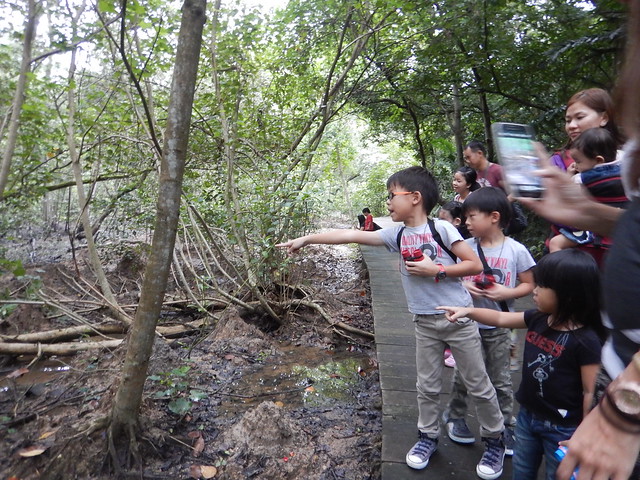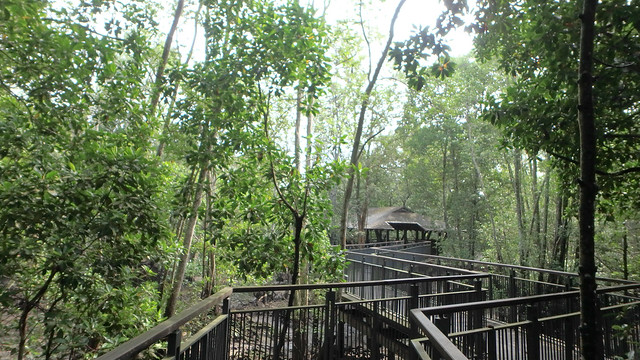The mud lobster thus plays a key role in sustaining life in a mangrove!
The volcano-shaped mud lobster mound is now rare and found only in some of Singapore's last remaining back mangroves. The mound can be as tall as 2m above the ground! The mud lobster mound is drier than its surroundings so it makes a perfect home for plants and other animals.
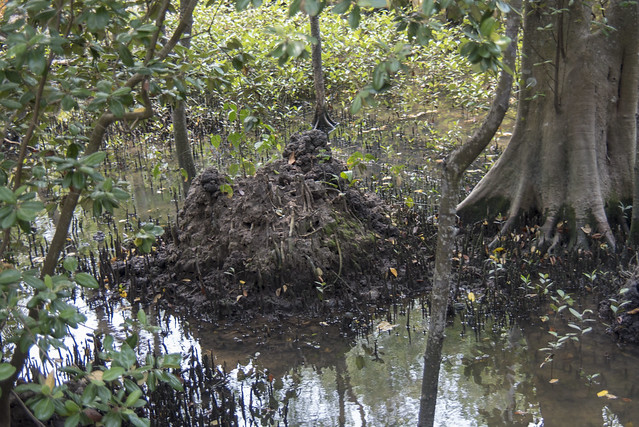 |
| At high tide, the mud lobster mound sticks out above water. |
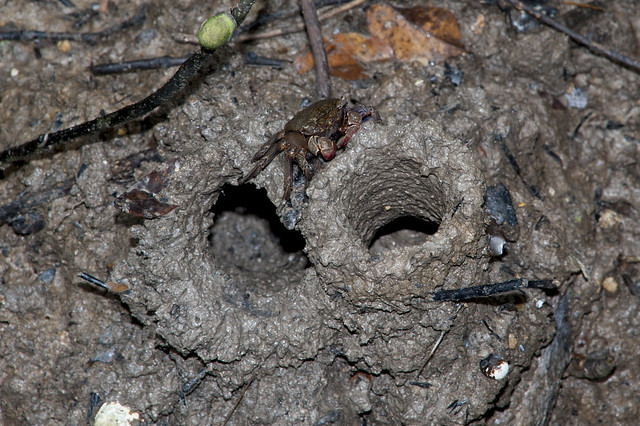 |
| Tree climbing crabs near 'chimneys' on a mud lobster mound. |
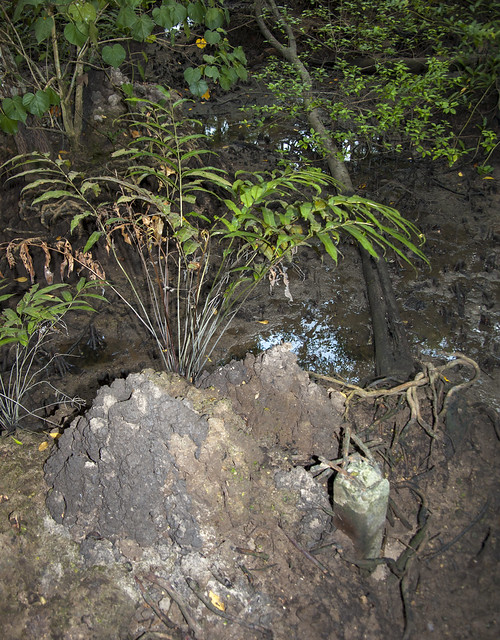 |
| A mangrove fern growing on a mound. |
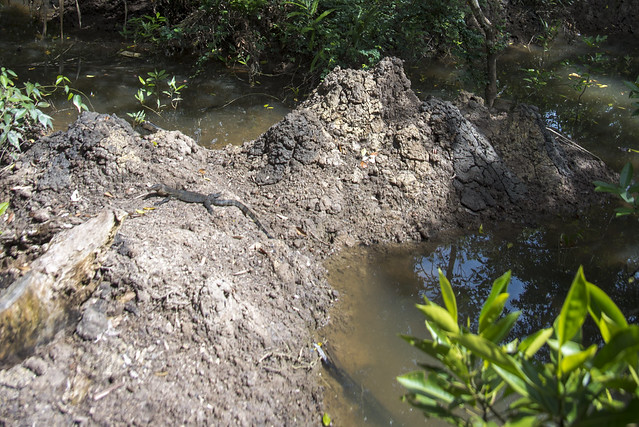 |
| Baby monitor lizard sunning on a mound. |
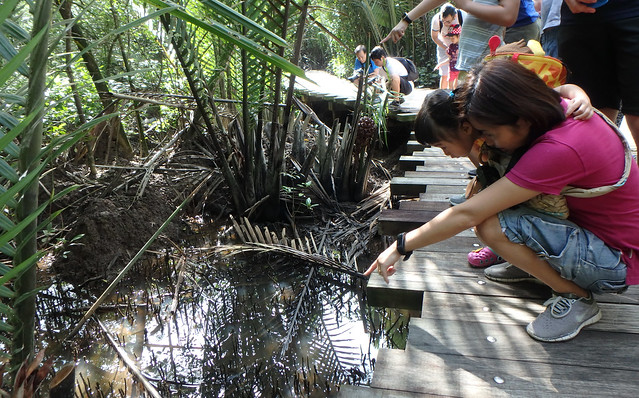 |
| Spotting critters in 'swimming pools' next to mounds. |
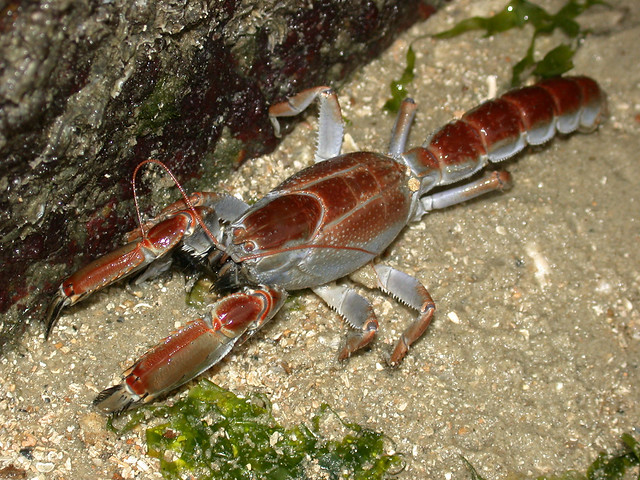 |
| A rare look at a mud lobster above ground! |
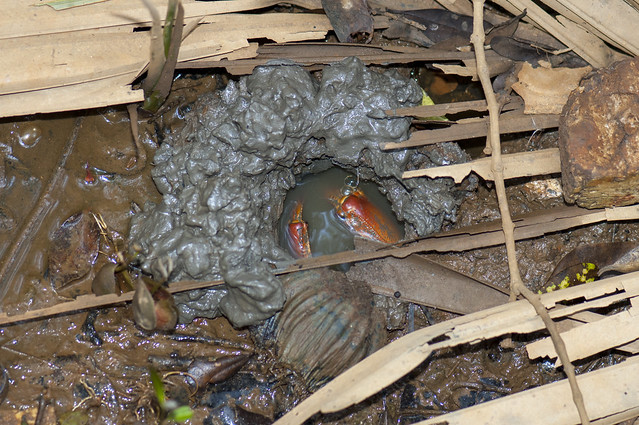 |
| Mud lobster at an opening in the mound. |
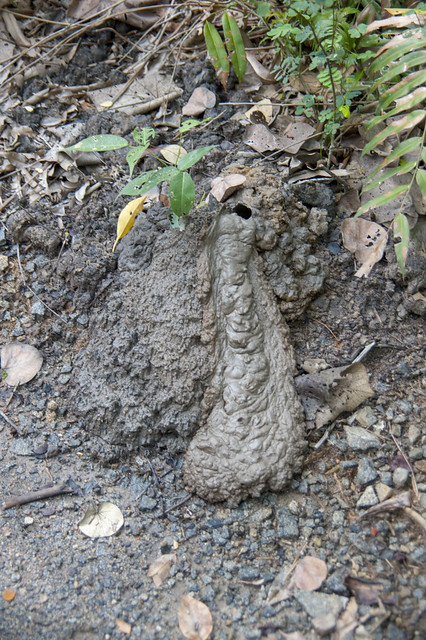 |
| Fresh 'lava flow' of mud means there's a busy mud lobster somewhere down there. |
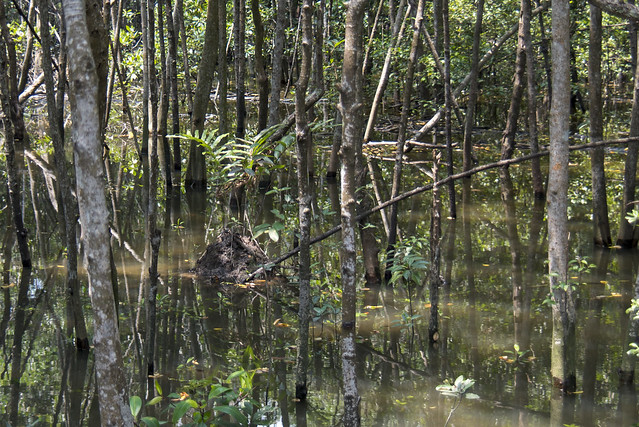 |
| Mud lobster mound in the mangroves at high tide. |
Where can we see mud lobsters and their mounds?
Their impressive mounds are easily observed from the Chek Jawa boardwalk. Go for the free Chek Jawa guided walk here on 4 Feb (Sun) by Ubin NParks to celebrate World Wetlands Day. More from NParks.
Another great place to see these 'condos' are at Pasir Ris Mangrove boardwalk. Go for the free guided walk here on 4 Feb (Sun) by NParks to celebrate World Wetlands Day. More from NParks. Or join the free guided walk here specially for kids and families on 11 Feb (Sun) evening by the Naked Hermit Crabs.
You can also admire mud lobster mounds from the Sungei Buloh Wetland Reserve Mangroves Boardwalk at the Wetland Centre. There are regular guided walks at Sungei Buloh to learn more about them such as the "What's in my mangroves" tour on 3 Feb (Sat) and 24 Feb (Sat). More from NParks.
Share your encounters with this amazing mangrove animal! I'd love to hear about it.
Links to more information
- Mud lobsters on the wild fact sheets by wildsingapore.
This article is written for Celebrating Singapore Shores as part of International Year of the Reef 2018.


